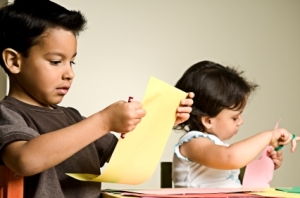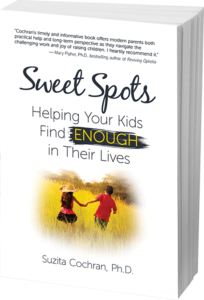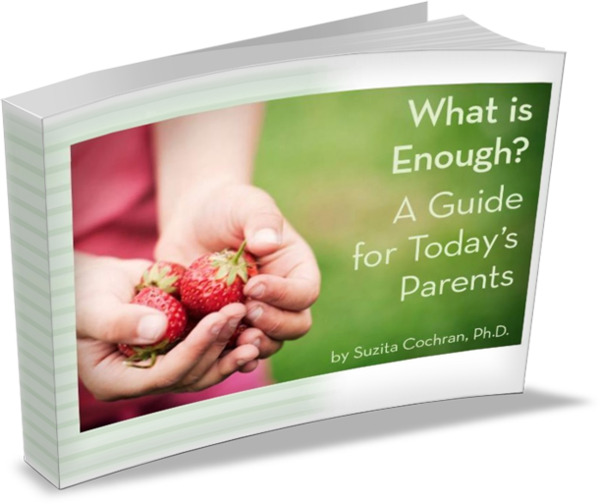 As I write this I am just a few days past the valentine making-phase I go through each year with our kids. This year, since our oldest is in middle school, only Annie and Daniel made valentines for their classmates.
As I write this I am just a few days past the valentine making-phase I go through each year with our kids. This year, since our oldest is in middle school, only Annie and Daniel made valentines for their classmates.
I do kind of dread the end of January when the valentine project begins. I get this immediate mental exhaustion response even before cutting the first heart. As the kids get older they do much more of it solo, but I find I still need to build in some structure to allow it to happen. My reminders, support around what to write on each valentine, creative suggestions (when requested), and help with clean-up are still required. Each year I invariably think, is it worth it?
I guess it must be worth it because we continue to embark on this endeavor year after year. However, this time I looked at the homemade valentines from yet another angle, the Green Triangle.
In 1990 Ernest Callenbach wrote an article describing his idea of the Green Triangle. It boils down to this: when you make a positive change in one area of your life, it also affects other areas positively.
The three points of the Green Triangle stand for MONEY, ENVIRONMENT, and HEALTH. The classic example Callenbach uses is someone commuting to work by bicycle. Perhaps she made this change in order to save money on gasoline and car wear and tear. In this case the behavior was initially begun in order to save money. However, riding one’s bike to work also helps the environment by reducing pollution and carbon emissions. And thirdly, riding a bicycle to and from work daily improves a person’s health.
This year as I sat with my gluey-fingered valentine creators I pondered how our homemade valentine effort fell on the Green Triangle. We began making our own valentines when Todd was still in graduate school and we needed to save money any way we could. Thus we began at the MONEY point of the triangle.
When it comes to ENVIRONMENT, we are reusing items we already own for much of the valentine making (cutting up old Christmas cards, or reusing other art projects in some way). So we are not generating more stuff that will eventually end up in a landfill. We also don’t travel anywhere to buy the valentines. This seems small, but I suppose if we fashioned many more of our own things, we’d create less pollution from our reduced car time.
Next we come to the point of the triangle labeled HEALTH. You may skeptically wonder, how does making your own valentines increase your health? When I think back to the all of the inky, glue spattered fingers which are invariably licked in the process of creating valentines, I have to agree we’ve got a few points against health there. However, being a psychologist, I’m never far away from the topic of mental health.
In fact, I believe MENTAL HEALTH is the main reason I continue to do this project with my kids each year. A little background: early on a teacher required each valentine to include a compliment for the recipient. I loved this idea and we have continued it annually.
Therefore during valentine making, my kids have to spend time thinking of an appropriate compliment for each child in their class. This part is actually what takes a while.
We spend time thinking and talking about each child in their class as we make valentines. Sometimes this conversation leads to a discussion of a struggle my child is having with a classmate and we take time out to problem-solve. However, usually this exercise gives my kids an overall feeling of gratitude. It makes sense: they’ve just thought of positive things about the people with whom they spend their school day. How could they not come away feeling appreciative?
As you may have guessed, my kids have to write more than “You are nice” on their valentines. But I also don’t require them to shoot for the moon. They tend to write compliments such as, “I really liked the poem you read in class. You are a good poet.” Or, “You dribble the ball really well on our basketball team.”
Helping my kids spend time thinking about the children at their school is also valuable because it helps them better understand their social world. These days it seems too easy for kids, especially boys, to go through childhood without thinking much about the experiences of others. Reading social cues in the classroom is a skill that makes school smoother for kids. I didn’t realize it when we began our valentine-making routine, but this is a rather painless way for my kids to work on this skill. And they can practice gratitude simultaneously!
Since the valentine creation process takes place over many days at our house, I had ample time to consider the Green Triangle concept. It was fun to think of different changes we are working on as a family and fit them into Callenbach’s idea. It’s also such a hopeful way to view making a change. In our busy lives, it can feel overwhelming to take on something new. It helps me to remember that a new behavior may be affecting more than one area of my life positively. It nicely addresses my parental need for efficiency!
In reading about the Green Triangle, I came across another writer who suggested the triangle be changed to a Green Square with the final point labeled COMMUNITY. I like this idea because it supports psychology research findings that people who are more socially connected are healthier and less depressed than isolated folks.
After school on Valentine’s Day, Annie received a phone call from a girl in her class. In first grade you don’t receive many phone calls, so this was exciting in and of itself. It turned out the little girl was so happy to have received Annie’s heartfelt compliment on the uniquely designed valentine that she wanted to phone Annie to thank her. The girls chatted for a while and Annie was beaming when she hung up.
_____
Update:
Our son Stephen loves geography. He’s our kid who puts atlas, globe, and geography book on his Christmas wish list.
These days many schools offer a Geography Bee (similar to a Spelling Bee but with geography questions). Stephen had some success in these during elementary school and set his sights on winning his middle school Geography Bee which would allow him to move on to the big one at the state level.
Stephen’s middle school’s Geography Bee took place last month. He truly studied hard for it, practicing nearly daily for two months. But he didn’t win. He won’t be going on to the state Geo Bee this year. He was pretty disappointed, understandably.
If you read about my stepfather’s Failure Payment system, you may be thinking what I was thinking. It was the perfect situation in which to give Stephen the first “Dan’s Good Failure” payment, and we did.
( In case you are wondering, I did get Stephen’s okay before writing this.)

 Sweet Spots: Helping Your Kids Find ENOUGH in Their Lives.
Sweet Spots: Helping Your Kids Find ENOUGH in Their Lives.


I’m excited to read more about the green triangle/square. The homemade cards really stood out, in a good way, in my son’s group of Valentines. I hope to make our own in years to come and I really like the validation addition. Do you make compliment filled Valentines for the members of your family too?
We haven’t required the kids to put compliments in their valentines to family, but after doing it their school valentines they have done it on their own for family. I got one this year from Annie that said, “Dear Mom, You are the best person a gil could hav.” (a girl could have). But the really sweet ones have been the sibling to sibling compliments.
You nuture such a healthy awareness in your children on all levels, in all regards. I totally empathize with the trepidation about the Valentine’s exercise as well knowing that it can be exhausting to put younger kids through the physical trial of actually writing all the cards. At the same time moments as with what happened to Annie are life changing, and ‘Valentine supporting’. I’ve told my kids after things like this you just never know what small gesture will greatly impact someone else’s life. You have to heed that sense and ‘execute’. And you know, these years are fleeting. When I’m exhausted at the prospect of these things I remind myself there will be plenty of years ahead where no one is making Valentine’s and settle in to enjoy it. A very thought provoking post as always.
You make a good point. It’s so hard to imagine now, but there will come a day when I may actually miss the valentine making mess, effort, and reminders. I like how you remind your kids of how their small gestures may affect others. So true.
Just read and LOVED your article on valentine-making. I had never thought of the green triangle (0r square). Great ideas even for adults. Thank you for the good thoughts.
I’ve never made Valentines with my kids, just went for store-bought. I might have to reconsider this though and I adore the compliment idea. It’s nice!
I loved this post! Valentine’s Day is one of those uncomfortable moments in the year, uncomfortable because I know I haven’t really thought out what I wanted my daughter to achieve by doing the classroom cards. I loved hearing the reasoning behind your choices–it helps make me more able to reason myself.
I would add another important aspect of doing this project–time. Without enough time to think through making the cards, this becomes another item on the to do list. Much less meaningful, much more of a chore. You were smart to start at the end of January rather than the weekend before.